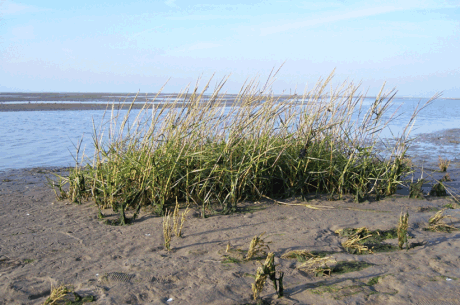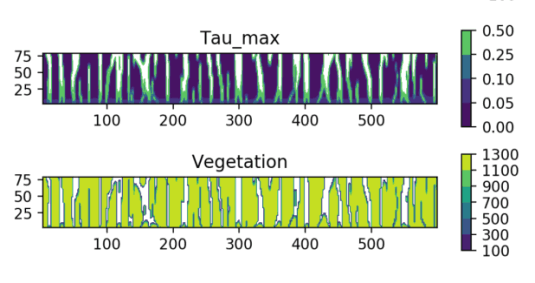B.P. Smits*1, J.T. Dijkstra1, P.M.J. Herman1,2
*
Introduction
More and more research is being carried out on the interaction between hydrodynamic systems and ecosystem responses, some of it presented at previous NCK conferences. Process-based modelling of these systems can help to gain insight into various applications related to flooding, wave attenuation, erosion, sedimentation, landscape development and ecosystem services. Key issues for modelling of such complex systems are computation time, interactive exchange of parameters and trade-offs between user-friendliness and reproducibility. Deltares has developed a new model instrument that can be applied to study feedbacks between hydrodynamics, sediment transport and ecosystem responses. This standardised Dynamic Vegetation Module simplifies numerous ‘personal’ scripts, whilst allowing flexibility for various applications. Thus far, formulations for vegetation dynamics have been developed for several vegetation types (i.e. river floodplains, mangroves, sea grass and salt marshes). Furthermore, the module could potentially be applied to simulate the dynamics of other types of biota.
Methods
Requirements for the new module are computation time, coherency and interactive exchange of parameters at variable ecological time step. In the Dynamic Vegetation Module the vegetation development is simulated in Python based on formulations for vegetation establishment, growth and decay. A Basic Model Interface (BMI) allows communication with any selected BMI compatible hydrodynamic model (e.g. Delft3D FM and XBeach) directly via memory, as well as running of single or multiple time steps1. Utilising this concept, the Python module continuously communicates with the hydrodynamic model to obtain flow parameters (e.g. water levels, velocities, shear stresses, bed levels) and then computes the vegetation response based on these physical parameters. Next, it communicates the updated vegetation parameters to the flow model to continue the hydrodynamic simulation.
Case study
The development of Spartina Anglica at the Plaat van Valkenisse2 (figure 1), was modelled as case study. The initial vegetation presence is modelled by a random field. Growth and decay are simulated based on bed level change, inundation time and a diffusive growth function. The results (figure 2) compare favourably to the actual development based on satellite images.

Figure 1: Patch of Spartina Anglica at Plaat van Valkenisse (Western Scheldt)
Applications
The Dynamic Vegetation Module has already been applied to study the development of a river floodplain3, the influence of sea level rise on a mangrove coast in Guyana4 and the feedbacks between seagrasses and suspended sediment in the Rødsand lagoon, Denmark5. Currently, our tool is being used to research the interaction of a seagrass-coral reef system in Saint Martin and salt marsh development under influence of tides and waves based on the Windows-of-Opportunities concept in the Western Scheldt.
Figure 2: Resulting maximum bed shear stress and vegetation density using the Dynamic Vegetation Module
1 Source: http://github.com/csdms/bmi;
2 Temmerman, S., et al. (2007). Vegetation causes channel erosion in a tidal landscape. Geology, 35(7), 631-634.
3 Van Oorschot, M. (2017). Riparian vegetation interacting with river morphology: modelling long-term ecosystem responses to invasive species, climate change, dams and river restoration, PhD thesis, Universiteit Utrecht.
4Best, U. (2017). Process-based modelling of the impact of sea level rise on salt marsh & mangrove fringe-mudflat morphodynamics. MSc thesis, UNESCO-IHE.
5 Akerboom, L.F.D. (2018). Modelling climate change-related feedbacks between seagrasses and suspended sediment in the Rødsand lagoon (Denmark) MSc thesis, TU Delft
I. Surname1*, F.N. Another-Surname2 , Y. Next-Surname2
1 University Name, Country; 2 Organization Name, Country
* Corresponding author: mail.name@organization.org


